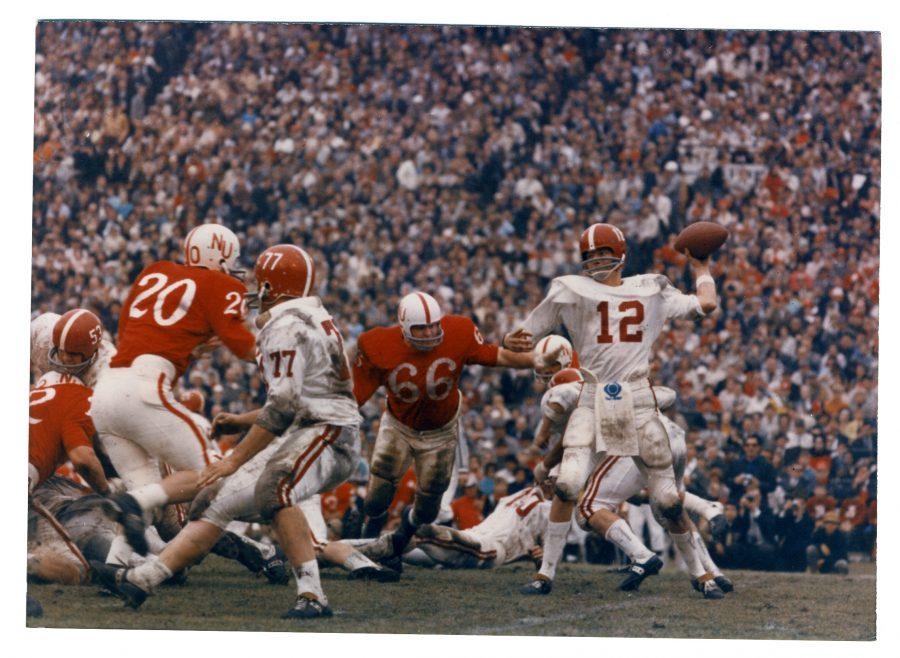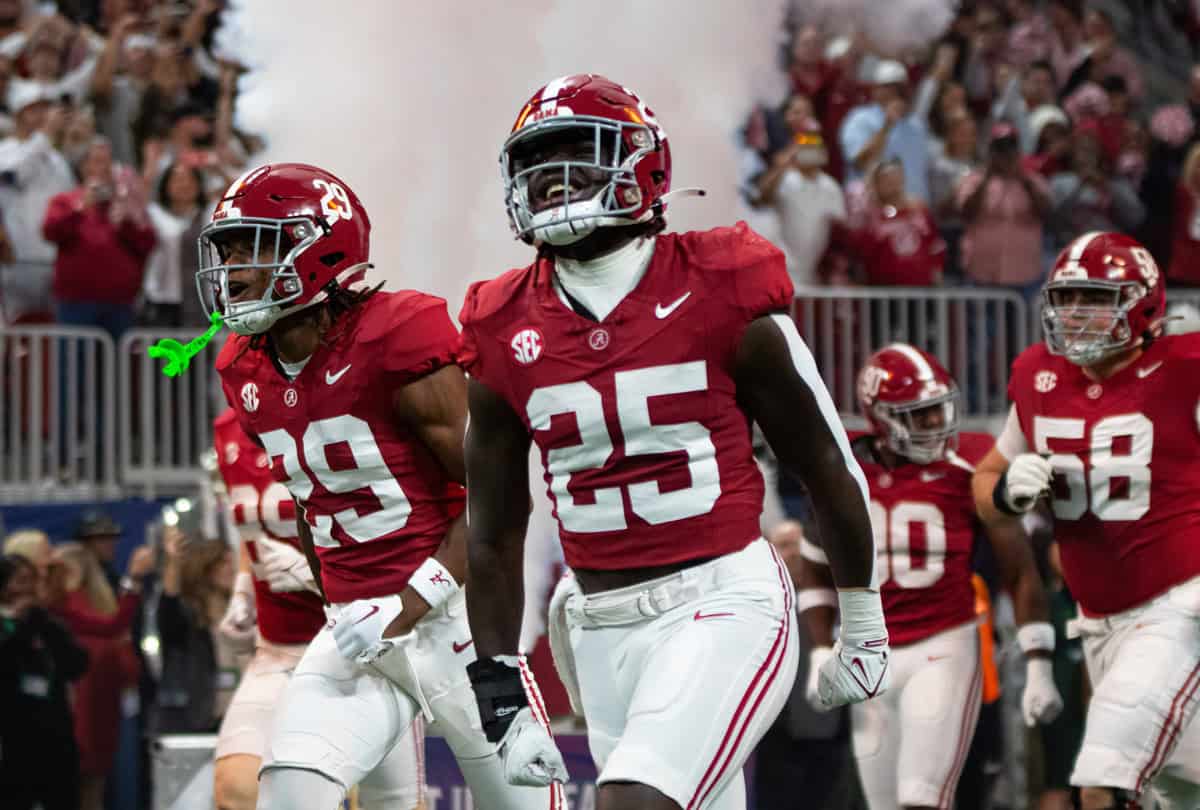On an option from his own 47-yard line, quarterback Ken “Snake” Stabler restored faith in the Alabama faithful. With the ball tucked under his right arm, his left pointing blockers to the opposition between himself and the end zone, Stabler raced through the mud to score, giving Alabama the lead.
It was the last game Bama Magazine editor Kirk McNair saw from the stands before beginning his career as a journalist, and then as a sports information director for the University. “I was one of those people in the upper deck getting soaked—umbrellas blown away,” McNair said. “It looked like no hope for Alabama, and then Stabler looked like he was on ice skates to me. How is this guy staying on his feet?”
The play, now called “The Run in the Mud,” instantly became a legend at Alabama, much like the quarterback under center.
“When he went to the end zone, it was pandemonium,” McNair said.
The Snake pass ed away on July 8 as a result of complications from stage 4 colon cancer, leaving behind a legacy many have called larger than life. That legacy, though, extends beyond his 28-3-2 record as starting quarterback in 1966 and ‘67 at the University, which included an undefeated season in ‘66, and beyond his career with the Oakland Raiders, leading the team to its first Super Bowl win in 1977. For many, his legacy is found in who he was outside of the huddle.
ed away on July 8 as a result of complications from stage 4 colon cancer, leaving behind a legacy many have called larger than life. That legacy, though, extends beyond his 28-3-2 record as starting quarterback in 1966 and ‘67 at the University, which included an undefeated season in ‘66, and beyond his career with the Oakland Raiders, leading the team to its first Super Bowl win in 1977. For many, his legacy is found in who he was outside of the huddle.
While Stabler was known for his skills as a quarterback at the Capstone, he was also known for his off-the-field ventures. He was ultimately suspended by Bryant for partying and missing class, which sent a message, McNair said, that rules are rules, regardless of skill level.
“Coach Bryant had this feeling all the way through that you don’t get anything by suspending the third team tackle,” McNair said. “That doesn’t send a message. But, if you suspend the quarterback, you send the message that the rules are for everybody and there will be no favoritism.”
Despite his suspension, McNair recalled that during the time he worked with Bryant, the famous coach respected the quarterback.
“Coach Bryant only said the most complimentary things about Kenny Stabler,” McNair said. “They were special guys to have gone through what they did to be successful under him and make Alabama successful.”
Following his tenure at Alabama, Stabler went on to play with the Oakland Raiders, but it was not until after his NFL career, McNair said, that Stabler truly became a fixture around the Alabama program. Paul W. Bryant Museum Director Ken Gaddy said that in the times he worked with Stabler, the most striking feature of the legendary UA quarterback was simply his willingness to help whenever he was asked.
“Anytime that we asked him to help us with a program, he’s been very kind, very generous with his time and honest in the interviews,” Gaddy said. “That’s what stands out, his generosity.”
His generosity extended beyond the University, Gaddy said, and to each and every fan he encountered.
“He had such a great personality, almost a larger than life figure,” Gaddy said. “Anytime I was around him, I never heard him say no to an autograph. Anyone he met, it was like they were his friend.” 
Also following his NFL career, Stabler worked in broadcasting serving as a commentator for CBS and as a radio color commentator with Eli Gold for 11 years. Gold said Stabler’s knowledge of the game was extraordinary and allowed the two to form the perfect pair.
“Kenny brought to the table something that I never could, and I would prepare and prepare and prepare, and was over prepared for each broadcast, but I could never bring to the table the fact that I never did take a snap in the SEC, I never took a snap in the NFL and certainly I never won a Super Bowl,” Gold said. “We complemented each other very well. I was able to describe things, and Kenny was able to say why these things happened. We really played off of each other very well. There’s an art to being a very good color man, as Kenny was.”
Of their time spent together, Gold said he will most remember traveling with the famed quarterback. Often, Gold said, it felt as if he was traveling with a world-famous rock star, but one who never had a shortage of time to devote to his fans.
“When you travel with Kenny Stabler going through the airports, it was like traveling with Paul McCartney,” Gold said. “You were with a rock star. People of all shapes and sizes, people of all ethnicities, people of all genders, people of all everything would want to come meet him, get an autograph, shake his hand, and never did he not accommodate those requests.”
Overall, Gold said, Stabler simply loved life and loved those who surrounded him.
“That’s the greatest epitaph a person can have,” Gold said. “He loved people, and people loved Kenny.”







